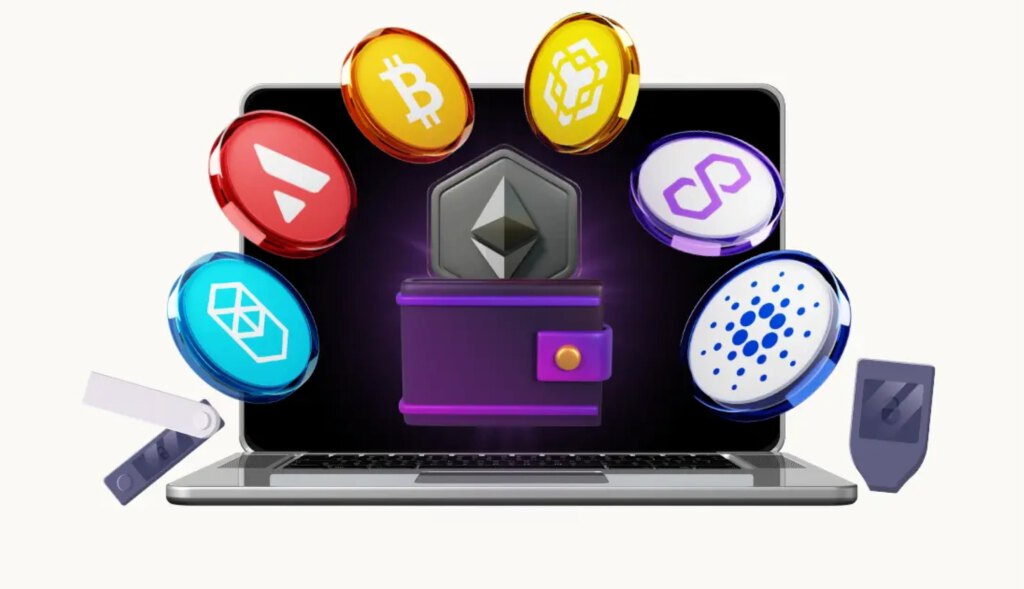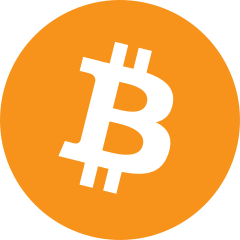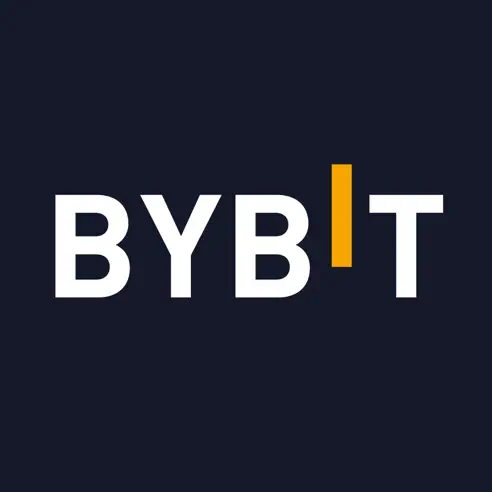P
repare to set up your crypto wallet and embark on a new journey of opportunities. In this article, we will understand what a crypto wallet is, how it works, what different types there are and of course, how to set one up and use it to interact in the exciting world of Decentralised Finance (DeFi).
Getting started with cryptocurrencies can be quite daunting. There are many things to be aware of before you start investing and using crypto. In a past article, we explained what cryptocurrencies are and what risks they hold. It is highly recommended to give that a read before you continue with setting up a Crypto Wallet and you can do so by following this link.
Most of you are already here because you know how Crypto works, but you don’t know how to get started. So why don’t we begin?
What is a Crypto Wallet?
A Cryptocurrency wallet comes in many forms and serves one main purpose which is to store your digital currencies securely. Crypto wallets are the gateway to the world of DeFi allowing you to interact with decentralised applications (dApps) of all kinds.
There are different Crypto Wallets for different blockchains and some are better than others. All wallets on the other hand have specific functions which they are all designed to do. This includes:
- Send/Receive Cryptocurrencies Between Wallets
- Buy/Sell Cryptocurrencies
- Interact with dApps
- Sign Transactions
- Store your Crypto Safely
- More!
This is a very simple explanation of what a Crypto Wallet is, but it is important to understand how they work. Although Crypto Wallets have many perks and benefits, they also come with inherent risks.
How Does a Crypto Wallet Work?
So, technically speaking, your Crypto Wallet does not store your digital currencies… Don’t worry, it’s easy to explain.
Instead, your Crypto Wallet stores your Private Keys. Your Private Keys are a series of 12 or more randomly generated words that are used to gain access to your Crypto Wallet. Private Keys hold and store all of your digital currencies. Public Keys on the other hand are like bank account numbers which can be shared with anyone. With every Public Key is a paired Private Key, which is used to encrypt and decrypt data on the blockchain.
Simply put, your Crypto Wallet holds a set of Private Keys. As we mentioned, the Private Keys have access to your cryptocurrencies, which are stored publicly for anyone to see on the blockchain.
Every Crypto Wallet is given a unique ‘Wallet Address’ (e.g. 0x12…i3abc) which is paired with their Private Keys, so any new or existing cryptocurrencies can enter the user’s wallet. This is done by either swapping, depositing or sending/receiving.
Now, you should have a basic understanding of how Crypto Wallets work, but it’s important to explain the different types of Crypto Wallets that are out there.
Types of Crypto Wallets
Most people probably know about Online Wallets such as Metamask and Trust Wallet. Little did you know that there are other forms of Crypto Wallets?
We like to categorise them into two categories, Custodial and Non-Custodial. In this section, we will break down each category so you can find your suited option of wallet.

Custodial Wallets
Usually, when someone starts their crypto journey, they tend to use the first wallet they see and this tends to be the Centralised Exchange (CEX) Crypto Wallet that you are initially provided with. Newcomers are generally not aware of the risks that come with this. When you use a CEX Wallet, you do not own your Private Keys and therefore you don’t own the cryptocurrencies within the wallet…
That’s right. The Centralised Exchange has control over your assets and just like a bank, they can freeze or remove those assets at any given time. This is why we use decentralised and Non-Custodial Wallets.

Non-Custodial Wallets
To live in a truly decentralised world, we need to have complete control over our assets, both physical and digital. Non-Custodial Crypto Wallets are a clear example of how people can safely look after their own assets/money.
As we mentioned earlier, when you set up a Crypto Wallet you are required to set up and confirm your Private Keys (Seed Phrase). Only you should have access to your Seed Phrase, which should be stored offline, written on a piece of paper and kept hidden, out of reach.
NEVER STORE YOUR SEED PHRASE ON A DIGITAL DEVICE
There are different types of Non-Custodial Wallets, all of which are decentralised and provide you with full control of your digital assets. We have categorised them into two sections known as Hot Wallets and Cold Wallets. Let me make it easy to understand, as this is vital information!

Hot Wallets
First let’s understand the difference between Hot and Cold Crypto Wallets which is very simple, Hot wallets are wallets that are connected to the internet and Cold Wallets are simply kept offline. As you may guess, Hot Wallets are vulnerable to hackers who can gain access to your internet. They are still a great choice if you know how to use them safely!
Online Crypto Wallets
The first choice for most in the world of DeFi is the Online Wallet option, as it is generally the easiest to operate. Popular wallets include Metamask, Trust Wallet and Phantom, all of which are only accessible via an internet connection and this includes anything from Web-Based, Mobile or Desktop Wallets!
NOTE: When you set up an Online Crypto Wallet (Hot Wallet), your seed phrase (Private Key) is stored online.
Cold Wallets
Briefly, we mentioned how Cold Wallets store the Seed Phrase (Private Keys) offline and to further expand on this, while they are not as easy and convenient as Online (Hot) Wallets, they provide you with near-bulletproof security and a better night’s sleep (it helps me). Cold Wallets will also cost you some money in
There are two types of Cold Wallets you can use, either Paper or Hardware Crypto Wallets. They both have their pros and cons, only you can decide which would be best for you.
Paper Crypto Wallets
A Paper Crypto Wallet is simply a piece of paper with a written or printed Private Key attached to it. The Paper Crypto Wallet can also be printed or engraved on to metal for safer keeping. Each one of these wallets will have a security hologram and underneath it is the Private Key to the Crypto Wallet. If there is any tampering with the Wallet, you will see it! Paper/Metal Crypto Wallets are generally dug underground or hidden in extremely safe places.
Hardware Crypto Wallets
The most popular form of a Cold Wallet in today’s world is a Hardware Wallet. Companies such as Trezor and Ledger have made a huge footprint in the world of Web3 by creating top-tier Hardware Wallets that are affordable for people all across the globe.
A Hardware Wallet is a digital and physical accessory that connects using USB or Bluetooth connection. Hardware Wallers will store the Private Key within the device and make any transactions or do anything, you will have to physically push buttons on the Hardware Wallet to approve or deny anything.
Here are some great Hardware Wallet options:
It’s worth noting that Hardware Wallets can connect to your Metamask or alternative Online Crypto Wallets. Metamask will simply act as the front end interface of the wallet, while Trezor secures the seed phrase, as it should.
How To Set Up a Crypto Wallet
Finally, the moment you’ve all been waiting for. How do I get started with a Crypto Wallet?
Well, as you saw yourselves, there are many options. We thought we would pick the most popular option, which happens to be the Online Wallet known as Metamask.
Metamask is a DeFi Wallet that allows you to connect to Ethereum and any EVM-Compatible network such as Avalanche, Polygon, zkSync, Linea, Fantom, the BNB Chain and many more!
Step-by-step we will show you how to set up a Metamask Wallet on a desktop/laptop. If you prefer a short YouTube video, then watch this quick YouTube Video!

Step 1 – Download Metamask
Head over to the official Metamask Website and download the Web Extension, which should take you to your browser’s store (e.g. Google’s Chrome Store), where you can safely and freely download it.
Step 2 – Create a Wallet
Once you have downloaded Metamask, you will be prompted with two options. Either ‘Import Wallet’ or ‘Create a Wallet’, we want to go with the latter (Create a Wallet) as we are setting up a brand new Crypto Wallet.
Confirm this by clicking the ‘Create a Wallet’ button.
Step 3 – Secure Your Seed Phrase
After, you will be prompted to secure your Seed Phrase, which as we have explained multiple times, is your Private Key that gives anyone with it access to your wallet!
Metamask will provide you with 12 randomly generated words, this is your Seed Phrase. Write down your Seed Phrase on a piece of paper and keep it somewhere safe, where only you can gain access to it.
Again, do NOT store it on any digital device that you own.
Step 4 – Congratulations!
Now that you have securely stored your seed phrase out of sight and reach, you are officially logged on the blockchain with a brand new wallet address and set of keys!
Step 5 – How To Buy Ethereum in Metamask
From here, you will have to deposit Ethereum (ETH) or any native assets on the desired network (e.g. Avalanche uses AVAX as its native gas currency).
There are two easy options to get assets into your Crypto Wallet.
Option 1
The first is to click the Buy button which will provide you with a few On-Ramp Buying Options. The most popular options are Revolut, MoonPay and Transak, all of which accept Debit/Credit cards and Bank Transfers!
Simply enter the amount you wish to buy, fill in the required details (KYC Required) and the assets should arrive in under a few hours.
Option 2
This is the most popular and by far the fastest option and that is to buy ETH on a Centralised Exchange (CEX) such as Binance or ByBit and then you can withdraw those assets directly to your wallet by using your Metamask Wallet’s unique Wallet Address (0x123…abc).
Step 6 – Good Luck!
Good news, you are now ready to spread your wings and explore the incredible and expansive world of Crypto!
Final Thoughts
Crypto Wallets are the gateway to Web3. Without them, we can’t do anything. We use them to interact with dApps across a huge array of blockchains, we use them to send/receive tokens and of course, we use them to buy/sell or trade even more cryptocurrencies!
The power is all in your hands now. You have entire control over your digital assets. Remember to tread carefully and never take financial advice from anyone.
Disclaimer
The content provided in this article is strictly intended for informational purposes. Nothing said in this article is financial advice. It is important to proceed with caution and diligence when using cryptocurrencies. Always invest what you are prepared to lose and remember that you are entirely responsible for your assets and investments. The author and the publication do not endorse or recommend any of the cryptocurrencies, protocols or strategies in this article.










